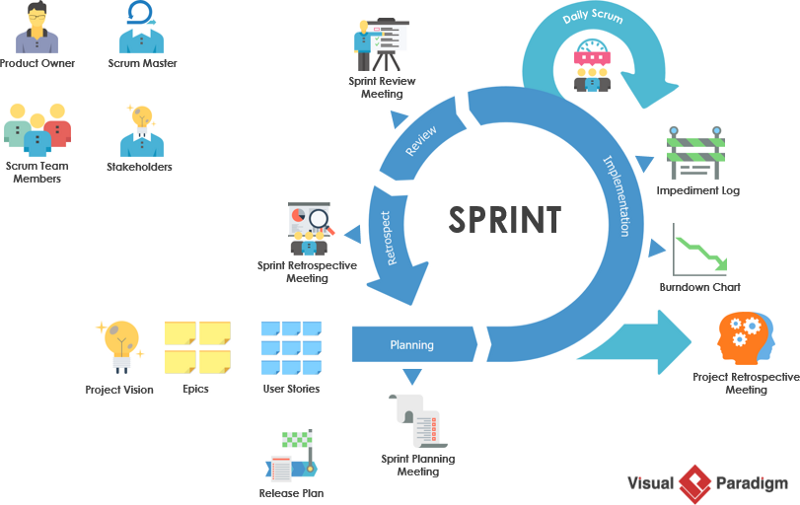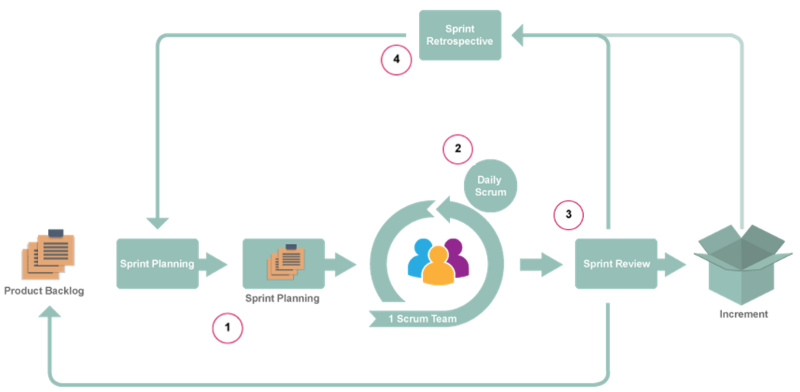Scrum is a framework within which people can address complex adaptive problems, while productively and creatively delivering products of the highest possible value.
Scrum itself is a simple framework for effective team collaboration on complex products. Scrum co-creators Ken Schwaber and Jeff Sutherland have written The Scrum Guide to explain Scrum clearly and succinctly. This Guide contains the definition of Scrum. This definition consists of Scrum’s roles, events, artifacts, and the rules that bind them together.
The Scrum Process
In agile projects, a sprint is a consistent iteration of time in which the development team creates a specific group of product capabilities from start to finish. At the end of each sprint, the functionality that the development team has created should be working, ready to demonstrate, and potentially shippable to the customer.

Sprints should be the same length within a project. Keeping the sprint lengths consistent helps the development team measure its performance and plan better at each new sprint.
Sprints generally last one to four weeks. Four weeks is the longest amount of time any sprint should last; longer iterations make changes riskier, defeating the purpose of being agile. We rarely see sprints lasting longer than two weeks, and more often see sprints lasting a week. One-week sprints are a natural cycle with the Monday-to-Friday business week that structurally prevents weekend work.
Some scrum teams work in one-day sprints where priorities change on a daily basis. Market and customer needs are changing more and more quickly, and the amount of time you can afford between opportunities to gather customer feedback only gets shorter.
Our rule of thumb is that your sprint shouldn’t be longer than your stakeholders can consistently go without changes in priority regarding what the scrum team should be working on in the sprint.
- Each sprint includes the following
- Sprint planning at the beginning of the sprint Daily scrum meetings
- Development time — the bulk of the sprint
- A sprint review and a sprint retrospective at the end of the sprint

Learn More About Scrum – Agile & Scrum Basis
- Comprehensive Scrum Guide
- What are Scrum’s Three Pillars?
- What is Agile Software Development?
- Scrum in 3 Minutes
- What are the 5 Scrum Values?
- What is the Evolution of Scrum?
- Classical Project Management vs Agile Project Management
- Why is Scrum Difficult to Master?
- What is Velocity in Scrum?
- What is Agile? What is Scrum?
- What are the Three Amigos Development Strategy in Agile?
- Empirical Process Control vs Defined Process Control
- How to Maintain Transparency in Scrum?
- Scrum vs Waterfall vs Agile vs Lean vs Kanban
- What is 3355 in Scrum Framework?
- Why Scrum? How Does Scrum Overcome 8 Pain Points We Always face?
- The Best Free and Commercial Agile Tools — Every Scrum Team Needs!
- What are the 8 Wastes in Lean?
- Extreme Programming (XP) vs Scrum
- What is Timeboxing in Scrum?
- Agile Myth: Documentation and Planning not Needed?

